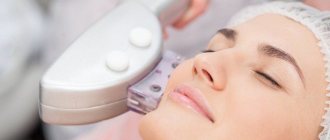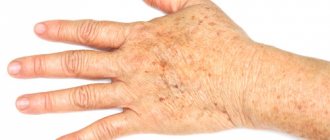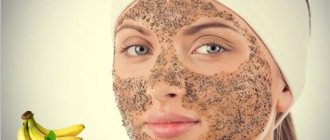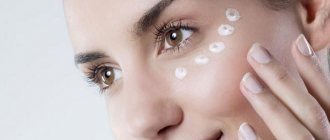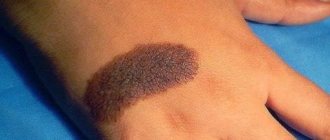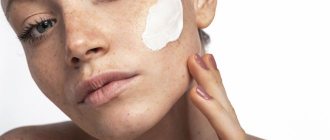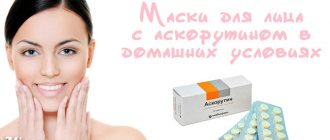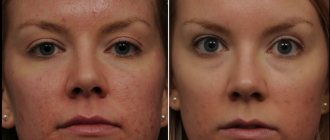Prices Doctors Info
Sign up
| Sokolova Ksenia Antonovna Dermatovenerologist, trichologist, mycologist, cosmetologist, podiatrist Ask a question Make an appointment View reviews |
| Bykova (Kachaeva) Yulia Ivanovna Dermatologist, venereologist, mycologist, trichologist Ask a question Make an appointment View reviews |
| Shchepleva Natalya Petrovna Dermatovenerologist, cosmetologist, trichologist, podiatrist Ask a question Make an appointment View reviews |
Need more information?
Thank you for your request. Your application is accepted. Our specialist will contact you shortly
Need more information?
Did not find an answer to your question?
Leave a request and our specialists will advise you.
Thank you for your request. Your application is accepted. Our specialist will contact you shortly
By clicking on the button, you consent to the processing of your personal data
The multidisciplinary medical laser treatment room provides a new service - removal of pigment spots using the MORE XEL fractional CO2 laser. The device is an innovative device for universal use, which allows you to quickly and safely solve a number of dermatological and cosmetic problems. To eliminate hyperpigmentation, a MORE XEL APHRODITE carbon dioxide laser with a special dermatological attachment is used.
A common problem in aesthetic cosmetology in the field of pigment spot removal is its insufficient attention to blood vessels in problem areas, which results in low effectiveness of procedures. Meanwhile, under each area of hyperpigmentation lies a pronounced vascular network that stimulates the production of melanin, and infrared exposure to the skin only enhances this process. When exposed to the MORE XEL APHRODITE carbon dioxide laser, the vascular network is coagulated, i.e. the structure itself that stimulates hyperpigmentation is eliminated. As a result, we get a pronounced and lasting effect of evenly pigmented skin in the long term.
At SM-Clinic, procedures to remove hyperpigmentation are performed by qualified dermatologists with extensive experience in clinical practice.
What is laser pigmentation removal?
Laser removal of age spots on the face and body is a hardware method that involves layer-by-layer destruction of melanin. This is the only truly effective and non-traumatic method; other procedures only lighten the accumulation of pigment.
Cosmetologists can also offer cryotherapy and acid washout, but none of the methods works as effectively as laser. This is the first obvious advantage of innovative technology.
The result after removing pigment spots on the face with a laser, according to reviews, lasts for a long period. If melanin production is normalized, which happens in most cases, the skin will remain light, evenly colored for many years. Naturally, subject to the exclusion of factors that provoke the formation of age spots.
After the laser works, the colored cells gradually peel off. The method allows you to effectively remove stains of any size and complexity. After this, new cells are formed on the treated area without excessive accumulation of pigment, so the skin takes on a natural color.
The specificity of melanin is such that its production is activated under the influence of sunlight. Therefore, the face and exposed parts of the body - décolleté, shoulders, arms - are most often affected. The risk group includes women over 35 years of age, since pigmentation also intensifies against the background of hormonal imbalances.
But not only ladies may need laser removal of age spots on the body. Some medications also make the situation worse by stimulating melanin production. There are also chronic diseases that affect processes in the body, including the production of pigments.
Although the procedure is almost 100% safe, to guarantee a successful result and to avoid unpleasant consequences, it is important to properly prepare for it. 2 weeks before going to the cosmetologist you should not sunbathe. 7 days before removing stains, do not take medications such as ibuprofen and aspirin, tetracycline antibiotics.
Another 3 months before the planned procedure, you must stop taking retinoids. Four weeks before skin treatment, self-tanning is prohibited.
- See also how to get rid of age spots on the face using folk remedies
How to get rid of pigment spots using laser: the essence of the procedure
Innovative methods in cosmetology help correct many skin defects, including dark spots. Laser treatment of pigmentation allows you to achieve good results and even out the tone on any part of the body.
Skin color depends on the level of melanin, which is produced by special cells called melanocytes. They protect the skin from the harmful effects of ultraviolet rays and are needed by the body. But sometimes the cells cluster in the epidermis and dark spots appear on the skin.
Laser technology removes such formations. They are exposed to light waves of a certain length (photothermolysis). Radiation only affects cells with a high pigment content. Melanocytes absorb energy, heat up and are destroyed. As a result, dark spots first turn red and then peel off and disappear completely.
During treatment, the device acts powerfully and in doses. Thanks to the targeted work, it does not damage neighboring tissues and does not lighten the overall skin tone.
Hyperpigmentation can be congenital or acquired. It may be caused by:
- pregnancy, breastfeeding;
- age-related changes;
- poor nutrition;
- taking certain medications;
- diseases of the endocrine system and gastrointestinal tract;
- visiting a solarium or tanning;
- mechanical and chemical damage to the skin.
Modern treatment removes any type of stain, regardless of origin.
The laser method eliminates:
- freckles - small yellow-brown formations that are more common in people with fair skin and red hair;
- lentigo - dark brown dense bulges with clear boundaries;
- chloasma (melasma) – dark smooth spots of different shapes;
- moles or nevi - formations in the form of compactions and growths of a round (oval) shape in all shades of brown.
Chloasma most often appears in the eye area (eyelids), temples and forehead. Small dots gradually merge and form large spots. Lentigines cover the face, arms, upper back, décolleté - places where the skin receives more ultraviolet radiation. It is these types of spots that are attributed to age-related changes. Most often they occur in women over 40 years of age and are associated with changes in the body and a lack of certain vitamins and amino acids.
Taking special medications solves this problem, but often at first causes a sharp increase in the number of spots. Removing pigmentation with a laser is the best way out in this situation. Such hardware treatment will not only remove dark formations, it will also get rid of acne, comedones, post-acne and rejuvenate the skin.
This cosmetic procedure is possible at any age, but it is recommended to carry it out before the age of 18 only as a last resort. This is due to the development of the endocrine system, which must be fully formed at the time of treatment.
Laser treatment of age spots is carried out in cold weather or at least 1 month before tanning. If this condition is not taken into account, hyperpigmentation may return and even intensify.
Laser treatment of dyschromia is not recommended for patients with severe cardiovascular pathologies and diabetes mellitus. Contraindications to the procedure may include:
- varicose veins;
- epilepsy;
- blood diseases;
- inflammatory processes that are accompanied by an increase in temperature;
- oncology.
Experts do not recommend undergoing hardware treatment during pregnancy, breastfeeding, menopause, or immediately after sunbathing.
There should be no scratches, herpetic rashes or any other damage in the area of laser exposure. The method is not compatible with taking certain medications:
- antifungal;
- hormonal;
- antibiotics.
Such drugs are called photosensitizers. Substances can intensify the process of new spots appearing and worsen treatment results.
For cosmetic procedures, waves from 630 to 1100 nm are used. This radiation destroys melanin. As the wavelength increases, its effect on the pigment decreases, but such a beam of light penetrates much deeper into the tissue. To balance the degree of penetration and the strength of the effect on melanin, the appropriate pulse and radiation density are selected.
This laser is used in surgery, cosmetology, and gynecology. Its waves penetrate deeper than all other devices into the skin. They promote the production of your own hyaluronic acid, elastin and collagen.
The beam of light is focused on the tissues, affecting them sparingly and precisely. It processes up to 20% of cells, and 80% remains unchanged, which contributes to the rapid and uniform restoration of the epidermis.
CO2 laser is used for:
- rejuvenation;
- eliminating wrinkles, scars after burns and cuts;
- removal of pigment spots.
- There are several types of fractional devices:
- continuous (the beam does not change during the procedure; it is used in surgery for dissection);
- pulsed (acts in short point flashes so quickly that neighboring tissues do not heat up);
- DOT technologies (combination of pulsed and continuous radiation).
After laser exposure, microperforation of the area occurs, and cells with a normal level of pigmentation develop on it.
The laser uses 1064 nm radiation. Short and long pulses penetrate the epidermis and dermis to a depth of up to 8 mm. This triggers the production of your own collagen and elastin, which promote non-ablative rejuvenation. The device removes permanent makeup, tattoos, age spots, treats nail fungus, and is used in carbon peeling.
The neodymium laser is characterized by high power (80 J), but thanks to the cooling system, the session is painless. The light beam is not scattered, but acts only in a certain area and does not affect neighboring cells.
The laser wavelength is 755 nm, the impact frequency does not exceed 10 Hz, and the power is 16 J. Such low indicators allow the light beam to penetrate the epidermis to a depth of 3 mm. This explains its limited range of effects.
The device is used for hair removal, rejuvenation procedures, removal of shallow spider veins, and treatment of superficial dyschromia (for example, freckles).
The diameter of the light beam that acts on the skin is 18 mm. The session goes quickly, and the cooling system avoids burns. The specialist will adjust the radiation strength according to your skin type, which will eliminate the appearance of scars.
Ruby lasers are a little slower than other types, so you need to go through more procedures to get the desired effect. They remove age spots and tattoos. The radiation affects follicles, but only a certain type, and is suitable for dark hair on fair skin.
The KTP Q-Switch laser from the German company Asclepion Laser Technologie is considered a more advanced model. It combines the properties of neodymium and ruby lasers. This innovative technology is based on a combination of high power and ultra-short pulses.
The fractional nozzle operates over an area of up to 10 mm. When changing it, the device automatically adjusts to the size of the spot, and the display shows all the information the cosmetologist needs. The equipment can be connected to a computer, and then all the data will be displayed on the screen.
The device removes multi-color tattoos, pigment spots, and spider veins well. It is used for rejuvenation, photoepilation, and treatment of acne. The laser is completely safe and minimizes the possibility of tissue scarring.
Laser treatment of pigment spots should be carried out by a specialist, then the procedure will be performed efficiently and in a short time.
4 weeks before the session, cosmetologists do not recommend sunbathing in a solarium or in the sun, and they recommend applying sunscreen to your skin when going outside. 2 weeks before treatment, patients should not go to the pool, bathhouse or sauna. Before the procedure itself, no scrubbing, chemical peeling, makeup or self-tanning are done. It is also necessary to limit the intake of certain medications: non-steroidal anti-inflammatory drugs, retinoids.
At the first consultation, the doctor will determine the skin phototype, find out the presence of contraindications, select settings for the device, and give individual recommendations.
Laser equipment, which is used in salons and medical centers, has already undergone a number of serious clinical studies, so the procedure is quick and gives a guaranteed result.
The area of wave exposure is cleaned of makeup, and then an antiseptic is applied. If the patient has sensitive skin, an anesthetic is used. In order not to injure moles with the tip, they are lubricated with cream, and for better penetration of radiation, the skin is sometimes covered with a special gel. Before the treatment, the patient puts on glasses, which he does not take off until the end of the session.
During the procedure, the cosmetologist points the tip at the spots and treats the desired area. In the affected area, the patient feels a slight tingling and heating. The intensity of the sensation depends on the individual sensitivity of the skin.
After hardware treatment, the surface is cooled for a long time, and then an anti-inflammatory balm is applied to restore it and a cream to protect against ultraviolet radiation.
The session is painless and helps to quickly get rid of age spots on the face. The laser is completely safe, because it acts selectively and does not harm neighboring tissues.
The spots are lightened on the neck, V-shaped neckline in the décolleté area, the back of the hands, the back in the forearm area, and legs. Moles are most often removed in those places where they cause the greatest discomfort (groin and armpit areas, knee and elbow bends, soles). The duration of this procedure depends on the area of the area and the nature of the pigmentation (for the neck, for example, it may take up to 3 minutes, and for the chest – up to 15 minutes).
Swelling and redness may occur after the session, but these symptoms should subside after a few days. As a result of laser treatment, pigment spots may darken, but within 7 days crusts form in their place, which cannot be removed independently. A little later they will peel off on their own and disappear.
Sunscreen is applied to the face and exposed areas of the body, and the remaining treated areas are covered with a soft cloth made of natural material. They are not rubbed with a hard washcloth while bathing, and products containing alcohol are not used for care. After the procedure, patients do not take a hot bath or go to the sauna or bathhouse.
Darker spots that are closer to the surface of the skin are easier and faster to lighten than other types. Sometimes it is enough to undergo 1-2 procedures to remove such defects. In rare cases, the patient may need up to 6 sessions. They are carried out at intervals of 3 weeks.
Usually the effect is visible after the first procedure. In complex cases, longer therapy may be necessary. As a result, the skin is completely cleansed and rejuvenated. Pimples, scars, post-acne and age spots of any type and size disappear. The treatment area appears uniform and level.
Pigment spots do not return after treatment, but subsequently they may appear in a new place. This is possible if their occurrence is associated with disruptions of the endocrine system and other organs. To avoid this, cosmetologists advise to undergo an examination and consult a dermatologist before the hardware procedure. It is often possible to remove pigment spots forever only as a result of complex treatment.
It is recommended to protect the skin from ultraviolet radiation, apply sun cream with 30 to 50 SPF and not sunbathe in the summer from 12 to 16 hours during the period of highest activity.
Hardware treatment is a completely safe procedure. Unlike injections, there is not even a minimal threat of infection. Thanks to the cooling system, most patients tolerate this treatment painlessly.
A large number of sessions are often not required to obtain the desired result. Sometimes, to remove a pigment spot with a laser, it is enough to undergo 1-2 procedures. Their average duration will be from 5 to 20 minutes.
The skin is not injured during therapy. Patients do not experience side effects such as scars, burns or cicatrices, and after hardware exposure they do not require long rehabilitation. The result of the procedure lasts forever, and the pigment spot no longer appears in the same place.
Laser pigmentation treatment can be carried out in conjunction with:
- peelings;
- plasma lifting;
- introduction of fillers;
- mesotherapy;
- elos technologies;
- biorevitalization;
- fractional rejuvenation.
These procedures correct and consolidate the result. Injections with a complex of vitamins help restore the epidermis and improve its condition. As a result, the skin retains its youth for a long time, looks uniform and smooth. However, it is advisable to take a two-week break between procedures.
Videos about how treatment is carried out are posted on their websites by beauty salons or medical centers that provide this service. Here you can study all the stages and features of the procedure, as well as clearly see the effectiveness of laser removal of hyperpigmentation.
Laser therapy successfully removes age spots of any type and diameter. After completing the course, the skin is rejuvenated, looks healthy and clean. To keep it in this form, you need to follow all the recommendations of the cosmetologist and, if necessary, undergo complex treatment.
Did you like the article? Share with your friends!
Indications for laser removal of age spots
Laser removal of age spots on the face, hands and other parts of the body is considered a safe procedure that is well tolerated by patients. People come to the salon with a variety of problems, ranging from spots that women may develop during pregnancy to freckles.
In most cases, such phenomena cause discomfort only because of the aesthetic component. And only sometimes excessive melanin production is caused by serious problems in the body, when treatment in a regular hospital cannot be avoided. But laser treatment in combination with drug therapy may still be necessary.
A cosmetologist will help you cope with seborrheic keratosis. The procedure is effective for eliminating epidermal moles. Sometimes pigmentation occurs after an injury, in which case you can safely resort to this method.
Laser removal of age spots may be necessary for sunbathers on the beach: the procedure will help even out the tone if the skin is too dark. Often changes towards uneven skin color are observed by people who are overly fond of solariums. If pigmentation actually appears after going to the salon, you can safely make an appointment for stain removal.
The method is effective in combating lentigo age spots.
Prices for laser removal of age spots:
- area up to 2 cm2 on one eyelid - from 2550 rubles;
- area up to 8 cm2 on one eyelid - from 3,700 rubles;
- local plot with an area of up to 4 cm2 - from 2100 rubles;
- plot area up to 10 cm2 - from 4450 rubles.
See also how to use Ascorutin for age spots on the skin.
Reasons for appearance
Most often, such formations on the skin are associated with too active production of the melanin pigment.
If this substance accumulates in the upper layers in very large quantities, this leads to the appearance of spots of a lighter shade. If such a deposit is located at a sufficiently great depth, then areas with similar spots have a darker color. As a rule, age spots have a flat shape and are characterized by the presence of uneven borders. They may vary in size and color in different areas. In some places they appear as small colored freckles, and in others as large dark spots. Experts identify a large number of factors that can provoke their formation . Moreover, these may be, along with external, internal reasons.
- congenital skin changes or heredity. There are many people among us who have had spots on their skin since birth. Moreover, they cannot be removed by any folk or cosmetic means;
- exposure to ultraviolet rays. The skin of the face differs from other areas in being more delicate and is the first to experience the negative effects of external factors. When it comes into contact with ultraviolet rays, it provokes the process of melanin synthesis. For this reason, facial skin especially needs additional protection. As such, you can use sunscreens, wide-brimmed hats and sunglasses;
- diseases and hormonal changes. This risk group includes pregnant women and women with age-related hormonal changes, as well as adolescents;
- If teenagers or pregnant women experience a similar phenomenon, then they may experience darkening for a short time, but subsequently they disappear on their own. If the cause is age-related changes or hormonal diseases, then such people need to visit a doctor who will prescribe the necessary medication;
- skin injuries, including burns, wounds, acne. If a person, through negligence or due to certain circumstances, has damaged a certain area of the skin, then after tightening the skin, they may acquire a darker color;
- diseases of the digestive system and internal organs. If the cause of the formation of spots is certain diseases, then the main measures should be aimed at treating the diseased organ.
Although such freckles do not pose a threat to health, they cannot be ignored, since this may be a signal of the presence of pathology in the body’s functioning. Therefore, if you notice such spots on your skin, you should see a doctor to understand what factors caused their appearance. After a successful diagnosis, the doctor will prescribe appropriate treatment, which can be supplemented by the use of cosmetics, which together will help get rid of spots on the face.
Contraindications to laser pigment spot removal
Although the procedure is considered harmless, it is worth checking to see if there are any health problems for which the laser beam is not recommended. And first of all, cosmetologists will advise you to wait until your 18th birthday - pigmentation removal is usually not performed on children.
If you want to even out your tone after tanning, you will have to wait at least 30 days after being on the beach.
The consequences of removing pigment spots with a laser are unpredictable if a person has skin problems - inflammation, cuts, acne, psoriasis or allergic dermatitis. So the cosmetologist will recommend curing the epidermis, and then sign up for a session. The main thing is that the area that will be treated is healthy.
Contraindications include cancer and autoimmune diseases, the formation of keloid scars. Even if a person is prone to tumor formations, it is better not to fight purely aesthetic defects.
The procedure is not performed for patients with tuberculosis and epilepsy. Pregnant women will have to postpone going to the salon; as during lactation, it is better not to rush to remove pigmentation.
The list of contraindications to laser removal of age spots also includes:
- blood diseases;
- severe damage to the cardiovascular system;
- diabetes;
- endocrinological diseases.
You should not go to a beauty salon during an exacerbation of mental illness. The procedure is not performed on people with a pacemaker. In case of severe varicose veins, the cosmetologist will also advise against using the method.
Why do age spots appear on the face?
Special skin cells – melanocytes – are responsible for the color of each person’s skin. If they do not function correctly, age spots appear on the epidermis, which have several forms:
- ephelides (freckles);
- chloasma (hormonal);
- lentigo (senile);
- melasma (common);
- nevi (moles);
- wine (vascular).
There are many factors that provoke age spots - the reasons for their appearance on the face:
- genetic predisposition;
- ultraviolet irradiation;
- age-related changes in the body;
- hormonal disbalance;
- diseases of the digestive tract;
- taking certain medications;
- use of photosensitizing cosmetics;
- deficiency of vitamins C and PP;
- excessive or aggressive skin care;
- pathologies of the kidneys and urinary system;
- liver diseases;
- endocrine disorders;
- cardiovascular lesions and others.
How is laser pigment spot removal done?
Laser removal of age spots is a salon procedure that begins with preparing the skin. If you have to work on your face, remove makeup and then clean it. The patient is placed on a cosmetology couch. The eyes are protected from the beam with special glasses.
The doctor applies a special gel to the area to be treated. If we are talking about particularly sensitive areas (around the eyes, for example), he will offer an anesthetic. Next, the specialist proceeds directly to removing pigmentation. First, the cosmetologist determines the patient’s sensitivity to the laser and adjusts the device in such a way as to achieve the effect, but without causing pain. There may only be tingling or warmth, which does not cause discomfort.
The laser tip is brought closer to the spot, but without touching the body. After treatment, the skin is cooled with a special nozzle and cosmetics are applied: as a rule, this is a restoration balm with a disinfection effect and sun protection cream.
Removing pigment spots on the hands with a laser most often occurs in several stages. To avoid burns, the doctor will not rush to “burn” all the melanin-stained cells at once.
A course of 2 procedures or more is recommended. But exactly how many times you will have to visit the office is determined by the cosmetologist. He draws up a treatment program, taking into account the characteristics of the skin, the scale and depth of the lesion.
Traditionally, a break is taken between procedures: it can last three or four weeks. On average, one session lasts no more than half an hour.
- Read more about how to get rid of age spots
Rules for the rehabilitation period
Once the procedure is completed, the recovery phase begins. Usually at this time, experts do not recommend exposing the skin to sunlight, washing with hot water, or visiting steam rooms and saunas. In addition, you should not try to speed up the desired result by using scrubs and lightening creams; the skin should recover on its own.
Removing spots with a laser is considered a low-traumatic procedure; after the operation, in most cases, no side effects are observed, which is why no specific care is required.
Skin care after laser pigmentation removal
After removing a pigment spot with a laser, virtually no special rehabilitation is required. A crust forms on the area that was treated with the beam. The doctor will forbid you to touch it - it should go away naturally.
Very rarely, swelling appears in the treated area. If such an effect occurs, as a rule, it disappears literally on the second day.
After the crust falls off, a light pink speck will be revealed underneath it. Literally within the next 2 weeks, maximum, the area will acquire a shade characteristic of healthy skin.
If you are confused by the price of laser removal of age spots on the face and body, the results obtained will prove that such a choice is justified. Moreover, unlike other procedures, the effect can last for a long time.
Although the treated area does not require special care, it should be protected from the sun. Therefore, the doctor strongly recommends applying a cream with SPF 30 or more. In addition, he will prohibit sunbathing for at least 2 weeks.
It is worth giving up hot baths and not going to the sauna for at least 3 days after treating the stains. You still have to temporarily forget about any skin care products if they contain alcohol.
If a cosmetologist worked on your face, it is better not to use decorative cosmetics for at least a day. Until the spot matches the color of the surrounding tissues, do not resort to cosmetic procedures that injure the epidermis. For example, these include any peelings and scrubs.
Results of using CO2 laser MORE XEL APHRODITE
The effect of color leveling is noticeable immediately; the number of required sessions is determined by the dermatologist at a consultation; in some cases, one session is sufficient.
For maximum results, you need to complete the recommended course. Using the MORE XEL APHRODITE device allows you to minimize the risk of secondary pigmentation of the problem area. No special rehabilitation measures are required, however, there are a number of temporary restrictions:
- limit exposure to the sun and any insolation as much as possible (if a trip to the sea is planned in the near future, it is better to postpone the session until arrival);
- when in areas of solar activity, use products with maximum protection filter;
- do not visit the solarium;
- Avoid visiting baths, saunas and other thermal procedures.
The possibility of using cosmetic care products must be agreed upon with the clinic’s treating dermatologist.
A significant advantage of removing pigment defects at the SM-Clinic is that the manipulations are performed by an experienced, qualified dermatologist while completely isolating the Laser Treatment room from the main dermatology department, which eliminates possible contact with potentially sick patients of the clinic.
The universal CO2 laser MORE XEL has a wide range of applications in aesthetic cosmetology. If necessary, the procedure can be combined with the elimination of other cosmetic defects - scars, scars, deep wrinkles, loss of elasticity, etc., including in the field of gynecology.
Even skin color, purity, elasticity and long youth are in your hands today. Call the number or leave your contacts in the form on the website, and let this be your first step towards a higher quality of life.
Prices
| Name of service | Price, rub.)* |
| Consultation with a dermatovenerologist (primary) | 1,950 rub. |
| Consultation with a dermatovenerologist (repeated) | 1,700 rub. |
| Laser skin resurfacing for hyperpigmentation (fractional CO2 laser) - 1 cm2 | 3,000 rub. |
We accept bank cards VISA, MASTERCARD, MAESTRO for payment
The full price list can be found at the reception or by phone.
* The administration of the clinic takes all measures to timely update the price list posted on the website, however, in order to avoid possible misunderstandings, we advise you to check the cost of services at the reception or in the contact center by phone
+7 (495) 292-39-72
.
The posted price is not an offer. Medical services are provided on the basis of a contract.
Laser pigment spot removal results
Reviews of laser pigment spot removal best confirm the effectiveness of the procedure. After completing a course recommended by a cosmetologist, clients are pleased with the evenness of their skin color. It becomes light, natural shade.
It must be emphasized that the laser does not just temporarily lighten the skin, it is a painless destruction and removal of melanin. Therefore, cosmetologists achieve excellent results that last for a long time, if not forever. Chemical peeling can demonstrate a similar effect, with the difference that it does not penetrate into the deeper layers of the skin. In addition, alternative methods can be traumatic, unlike laser removal of age spots: reviews indicate that it is painless and without a long recovery period.
Moreover, gentle exposure to the beam generally has a beneficial effect on the epidermis. Laser energy helps activate the production of collagen and elastane. Therefore, in the photo after removing pigment spots with a laser, not only lightening, but also smoothing of the skin is noticeable.
For the procedure to proceed safely, you should choose a salon with good recommendations. The priority is given to new generation laser devices: they are characterized by increased power, while being gentle on the skin, eliminating adverse effects.
To consolidate the result, a professional and experienced cosmetologist usually gives recommendations on how to maintain the epidermis to prevent the appearance of new spots. If you follow his advice, you will certainly be able to avoid a recurrence of hyperpigmentation.
Is it possible to remove pigment spots with a laser?
Using the technology in question, any type of excessive coloration of skin areas is eliminated. Whether the laser completely removes pigment spots depends on the depth of melanin. Surface defects disappear after 1-2 sessions. For more serious cases, 1-3 courses of 8-10 manipulations are required at intervals of at least 20 days. This is a long and expensive treatment, but so far no other therapy produces such an effect as laser pigmentation removal; before and after photos confirm its effectiveness. The final results are shown on already healed skin.
Types of Hyperpigmentation Spots
One of the main pigments of the skin is melanin, the main function of which is to provide protection from the negative effects of ultraviolet rays. It is found in melanocytes located in the dermis and in the basal layer of the epidermis. The pigment is synthesized in the organelles (melanosomes) of melanocytes and moves along the dendritic processes of these cells into epidermal keratinocytes. Hyperpigmentation, depending on the depth of the pigment, can be dermal, which has a grayish or bluish color, and epidermal (brown).
There are a number of dermatoses accompanied by an excessive increase in the number of melanocytes or their size (melanocytic type) or excessive pigment synthesis (melanin type). These disorders can be caused by various endocrinopathies (dysfunction of the adrenal glands, thyroid gland, pituitary gland), certain chronic diseases (systemic scleroderma, tuberculosis, etc.), exposure to drugs (antiarrhythmic, antimicrobial, anticonvulsants and other drugs) or chemicals, etc. d.
However, the reason patients turn to cosmetologists and dermatologists, as a rule, are such limited acquired pigmentation disorders on the face and hands as:
- ephelides (freckles);
- chloasma;
- lentigo;
- age-related (skin photoaging) and solar hyperpigmentation;
- areas of post-inflammatory hyperpigmentation as a consequence of acne (post-acne), psoriasis, traumatic and burn injuries, after lichen planus, atopic dermatitis, blistering dermatoses, pyoderma rash, eczema, etc.
- secondary hyperpigmentation after various cosmetic procedures.
